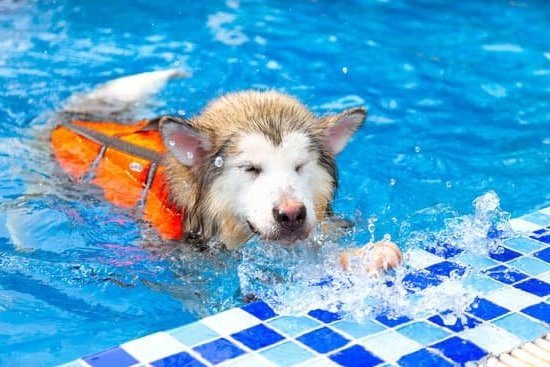Are you wondering how to train a dog to go on walks? Training your furry friend to walk properly on a leash can be a rewarding experience for both of you.
In this article, we will explore the various aspects of training your dog to go on walks, from understanding your dog’s behavior and needs to choosing the right leash and collar. We will also discuss positive reinforcement training techniques, the importance of consistency and patience, preparing your dog for walks through socialization and desensitization, practical tips for successful walks, and troubleshooting common walking issues.
Walking your dog is not only beneficial for their physical health but also for their mental well-being. It provides them with much-needed exercise, mental stimulation, and an opportunity to explore the world around them. However, training your dog to walk properly on a leash requires an understanding of their behavior and needs. Every dog is unique, so it’s essential to tailor your training approach based on their individual temperament and personality.
Choosing the right leash and collar for your dog is crucial in ensuring their comfort and safety during walks. Additionally, utilizing positive reinforcement training techniques can help encourage good walking behavior in your furry companion. Consistency and patience are key factors in successfully training your dog to go on walks. With dedication and the right approach, you can set them up for enjoyable and stress-free walks.
Understanding Your Dog’s Behavior and Needs
Before embarking on the journey of training your dog to go on walks, it is crucial to understand your furry friend’s behavior and needs. Each dog is unique, and their behavior can be influenced by their breed, age, past experiences, and individual personality. By understanding your dog’s behavior and needs, you will be better equipped to address any issues that may arise during the training process.
One important aspect of understanding your dog’s behavior is recognizing their body language and signals. Dogs communicate through their body language, and being able to interpret their cues will help you understand how they are feeling during walks. For example, a dog that is pulling on the leash may be excited or anxious, while a dog that cowers or tries to hide may be fearful or stressed.
Additionally, it’s essential to consider your dog’s physical needs when preparing for walks. Different breeds have different exercise requirements, so it’s important to ensure that your dog gets enough physical activity during walks. Taking into account their energy level, age, and any health concerns will help you tailor the walking experience to meet their specific needs.
Overall, taking the time to understand your dog’s behavior and needs sets a solid foundation for successful training. By being attentive to their signals and considering their physical requirements, you will be able to address any challenges that may arise during the training process and provide a more enjoyable walking experience for both you and your furry companion.
Choosing the Right Leash and Collar for Your Dog
The right leash and collar for your dog are crucial for a successful and comfortable walking experience. There are various options available, so it’s important to consider your dog’s size, behavior, and specific needs when choosing the perfect gear.
When it comes to choosing a leash, the standard 6-foot leash is often recommended for most dogs. This length provides your pet with enough freedom to explore their surroundings while still keeping them under control. Retractable leashes can be tempting, but they can lead to safety hazards and lack of control over your dog’s movements.
In terms of collars, there are several types to choose from including flat collars, martingale collars, choke chains, and head halters. Flat collars are suitable for most dogs, but if you have a strong puller or a dog prone to slipping out of their collar, a martingale collar may be a better option.
It’s important to ensure that the collar fits comfortably around your dog’s neck – you should be able to fit two fingers between the collar and your pet’s neck without it being too tight or too loose.
| Leash | Collar |
|---|---|
| Standard 6-foot leash is recommended | Flat collars are suitable for most dogs |
| Avoid retractable leashes due to safety hazards | Martingale collars may be better for strong pullers or escape artists |
Positive Reinforcement Training Techniques for Walking
When it comes to training your dog to go on walks, positive reinforcement techniques can be highly effective. Using rewards and praise to encourage good behavior can help create a positive association with walking and make the experience enjoyable for both you and your furry friend. Here are some positive reinforcement training techniques that you can use:
- Use treats: Carry small, bite-sized treats during your walks to reward your dog for walking nicely by your side or following commands such as “sit” or “stay”.
- Verbal praise: Dogs respond well to verbal praise, so be sure to offer plenty of enthusiastic praise when your dog behaves well on a walk.
- Clicker training: Clicker training is another effective method where the sound of a clicker marks the desired behavior, followed by a treat as a reward.
It’s important to remember that every dog is different, so it may take some trial and error to figure out which rewards work best for your pup. The key is to find what motivates your dog and use that as a reward during training.
Consistency is also crucial when using positive reinforcement techniques. Make sure to always reward the behavior you want to encourage and avoid inadvertently rewarding any undesired behaviors.
In addition, it’s important to keep training sessions short and fun. This will help keep your dog engaged and excited about going on walks, making the training process more enjoyable for both of you. With patience and persistence, you’ll be able to train your dog to go on walks using positive reinforcement techniques.
The Importance of Consistency and Patience in Training
Consistency and patience are essential when it comes to training your dog to go on walks. Dogs thrive on routine, so it’s important to be consistent with your training methods, commands, and expectations. This means maintaining the same schedule for walks, using the same cues and commands, and enforcing the same rules each time you go out with your dog. Consistency helps your dog understand what is expected of them and creates a sense of predictability and security.
Patience is also key when training your dog to go on walks. Just like humans, dogs learn at their own pace, so it’s important to remain patient and understanding throughout the training process. It’s natural for dogs to be curious or hesitant about new experiences, environments, or training techniques. By being patient and giving them the time they need to adjust and learn, you can build trust and a strong bond with your dog.
Developing a Training Schedule
One way to maintain consistency in your training is by developing a regular schedule for walks. This includes setting specific times for walks each day, as well as establishing a routine before and after the walk. Dogs are creatures of habit, so having a set schedule can help them anticipate when it’s time for their walk and what behaviors are expected of them during this time.
Reinforcing Positive Behavior
Consistency also involves reinforcing positive behavior consistently. Whether it’s using treats, praise, or toys, positive reinforcement plays a crucial role in shaping your dog’s behavior during walks. By consistently rewarding good behavior such as walking calmly on the leash or following commands, you can encourage your dog to continue exhibiting these positive behaviors in the future.
By being consistent with your training methods and patient with your dog’s progress, you can create a positive environment that supports successful walking experiences for both you and your furry companion.
Preparing Your Dog for Walks
Before taking your dog on walks, it’s important to prepare them through socialization and desensitization. This will help them become more confident and comfortable in various environments and around different people and animals. Socialization involves exposing your dog to a variety of experiences in a positive way, while desensitization involves gradually exposing them to things that may trigger fear or anxiety.
Start by introducing your dog to new sights, sounds, smells, and experiences in a controlled and positive manner. This can include taking them to different locations such as parks, busy streets, or areas with other dogs. It’s important to observe your dog’s reactions during these exposures and provide encouragement and rewards for calm behavior.
In addition to socializing your dog with different environments, it’s important to expose them to various people and animals. This can include interactions with friends’ dogs, friendly strangers, children, and other pets. When introducing your dog to new stimuli, always prioritize their safety and well-being by carefully monitoring their reactions and providing positive reinforcement for good behavior.
| Training Techniques | Description |
|---|---|
| Socialization | Exposing the dog to new experiences in a positive way. |
| Desensitization | Gradually exposing the dog to triggers of fear or anxiety. |
Practical Tips for a Successful Walk With Your Dog
Choose the Right Time and Place
When planning a walk with your dog, it’s important to consider the time of day and location. It’s best to avoid walking during extreme temperatures, especially in hot weather. Opt for early morning or late evening walks when the temperature is cooler. Additionally, choose a quiet and familiar location for your dog’s walk, especially if they are still getting used to being outside on a leash.
Use Proper Equipment
Having the right equipment can make a significant difference in your dog’s walking experience. Ensure that your dog’s collar or harness fits properly and is comfortable. Use a sturdy leash that gives you control without causing discomfort to your dog. For dogs that tend to pull, using a no-pull harness can be beneficial in preventing them from dragging you around during walks.
Start Slowly and Gradually Increase Distance
If your dog is new to walking on a leash, start with short walks around the block or in a quiet area. As they become more comfortable, gradually increase the distance and duration of the walks. This gradual approach will help prevent any overwhelming or negative experiences for your dog.
Be Mindful of Your Dog’s Needs
During the walk, pay attention to your dog’s body language and behavior. If they seem anxious or tired, be prepared to cut the walk short and try again another time. Bring water for both you and your dog, especially during hot weather. Always clean up after your pet and respect community rules regarding pets in public spaces.
By following these practical tips, you can ensure that each walk with your furry friend is an enjoyable experience for both of you. Remember that every dog is unique, so be patient and attentive as you learn what works best for your canine companion.
Troubleshooting Common Walking Issues
When it comes to walking your dog, encountering common issues such as pulling, lunging, and fearfulness can be challenging. However, with the right techniques and training methods, these issues can be addressed effectively. Here are some tips for troubleshooting these common walking issues:
1. Pulling: If your dog tends to pull on the leash during walks, consider using a front-clip harness or head halter to discourage pulling. Additionally, practice loose leash walking exercises with your dog by stopping whenever they start pulling and resuming the walk only when they relax the tension on the leash.
2. Lunging: Dogs may lunge towards other dogs, people, or objects during walks due to excitement or fear. To address this behavior, work on teaching your dog basic obedience commands such as “sit” or “stay” to redirect their focus when they feel the urge to lunge. Gradually expose them to the triggers in controlled environments while rewarding calm behavior.
3. Fearfulness: If your dog displays fearfulness during walks, it’s important to desensitize them to their triggers gradually. Use positive reinforcement techniques to associate the trigger with something positive such as treats or praise. Create a safe and comfortable environment for your dog during walks and avoid forcing them into situations that may heighten their fear.
By implementing these troubleshooting tips and being patient and consistent in your training efforts, you can help your dog overcome common walking issues and enjoy stress-free walks together. Remember that every dog is different, so don’t hesitate to seek professional help if needed.
How to Train a Dog to Go on Walks
In conclusion, training your dog to go on walks can be a rewarding and beneficial experience for both you and your furry companion. By understanding your dog’s behavior and needs, choosing the right equipment, using positive reinforcement techniques, and being patient and consistent, you can successfully train your dog to walk with you in a calm and controlled manner.
It is important to remember that every dog is different, so what works for one may not work for another. It’s crucial to tailor your training methods to suit your individual dog’s personality, energy level, and any specific issues they may have. By taking the time to socialize and desensitize your dog to various stimuli they may encounter on walks, you can help set them up for success.
Additionally, don’t be discouraged by common walking issues such as pulling, lunging, or fearfulness. With the proper guidance and training techniques, these behaviors can be improved over time. Remember that building a strong bond with your dog and enjoying the process of training are just as important as the end goal of successful walks. With patience, consistency, and love, you can train your dog to be a well-behaved walking companion.
Frequently Asked Questions
How Do You Train a Dog to Walk Beside You Without Pulling?
Training a dog to walk beside you without pulling requires consistency, patience, and positive reinforcement. Start by using a short leash and rewarding your dog with treats or praise when they walk alongside you without pulling.
Use a command like “heel” and gently redirect them back to your side when they start to pull. Practice walking in different environments and gradually increase the duration of the walks as your dog improves.
How Long Does It Take to Train a Dog to Walk?
The time it takes to train a dog to walk properly on a leash can vary depending on the individual dog’s temperament, breed, age, and previous training. Some dogs may learn quickly within a few weeks, while others might take several months to fully grasp the concept of walking without pulling.
It’s important to be patient and consistent with the training process, as every dog is different.
How Do I Get My Dog to Stop Pulling on the Leash?
To get your dog to stop pulling on the leash, consider using a front-clip harness that discourages pulling and allows you more control over their movements. When your dog starts to pull, stop walking and wait for them to relax before continuing.
Avoid jerking or yanking on the leash, as this can cause discomfort or distress for your pet. Consistent training with positive reinforcement techniques will help encourage better leash manners over time.

Welcome to the blog! I am a professional dog trainer and have been working with dogs for many years. In this blog, I will be discussing various topics related to dog training, including tips, tricks, and advice. I hope you find this information helpful and informative. Thanks for reading!





